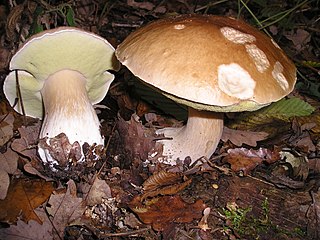
A bolete is a type of mushroom, or fungal fruiting body. It can be identified thanks to a unique cap. On the underside of the cap there is usually a spongy surface with pores, instead of the gills typical of mushrooms. A similar pore surface is found in polypores, but these species generally have a different physical structure from boletes, and have different microscopic characteristics than boletes. Many polypores have much firmer, often woody, flesh.

Nototriton lignicola is a species of salamander in the family Plethodontidae. It is also known as the Cerro de Enmedio moss salamander. It is endemic to Honduras.
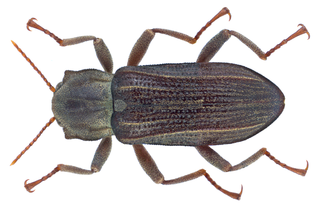
Stenelmis is the largest and most widespread genus of beetles in the family Elmidae.
Orthodontopsis is a genus of moss in the family Orthodontiaceae. It contains two species:
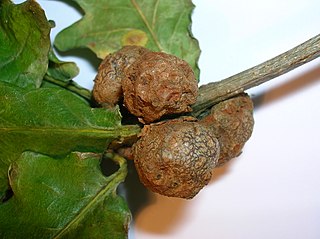
Cola-nut galls develop as a chemically induced distortion of leaf axillary or terminal buds on pedunculate oak or sessile oak trees, caused by the agamic gall wasp Andricus lignicola which lays single eggs within leaf buds using their ovipositor. A previous name or synonym for the species A. lignicola is A. lignicolus and A. venheurni.
Duradens is a genus of fungi in the family Clypeosphaeriaceae. This is a monotypic genus, containing the single species Duradens lignicola.
Ascominuta is a genus of fungi in the class Dothideomycetes. The relationship of this taxon to other taxa within the class is unknown. This is a monotypic genus, consisting of the single species Ascominuta lignicola.

Leucopholiota is a genus of fungi in the family Squamanitaceae. Basidiocarps are agarics (gilled mushrooms}. Two species are currently known, both from north temperate areas: Leucopholiota decorosa and Leucopholiota lignicola.
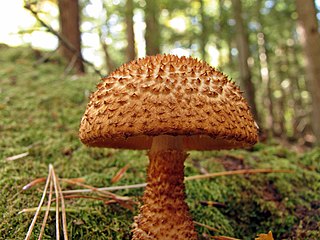
Leucopholiota decorosa is a species of fungus in the mushroom family Squamanitaceae. Commonly known as the decorated pholiota, it is distinguished by its fruit body which is covered with pointed brown, curved scales on the cap and stem, and by its white gills. Found in the eastern United States, France, and Pakistan, it is saprobic, growing on the decaying wood of hardwood trees. L. decorosa was first described by American mycologist Charles Horton Peck as Agaricus decorosus in 1873, and the species has been transferred to several genera in its history, including Tricholoma, Tricholomopsis, Armillaria, and Floccularia. Three American mycologists considered the species unique enough to warrant its own genus, and transferred it into the new genus Leucopholiota in a 1996 publication. Lookalike species with similar colors and scaly fruit bodies include Pholiota squarrosoides, Phaeomarasmius erinaceellus, and Leucopholiota lignicola. L. decorosa is considered an edible mushroom.
A. lignicola may refer to:

Anisopodus is a genus of beetles in the family Cerambycidae, containing the following species:
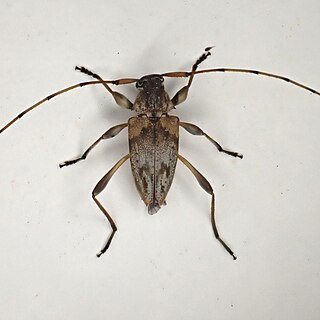
Anisopodus lignicola is a species of beetle in the family Cerambycidae that was described by Henry Walter Bates in 1863.
Nozeba is a genus of very small, somewhat amphibious land snails that have a gill and an operculum, semi-terrestrial gastropod mollusks or micromollusk in the family Iravadiidae.
Dillwynella lignicola is a species of sea snail, a marine gastropod mollusk in the family Skeneidae.

Buchwaldoboletus lignicola is a species of bolete fungus in the family Boletaceae native to Europe and North America. Found on wood, it is actually parasitic on the fungus Phaeolus schweinitzii. It has a convex yellow- to rusty brown cap, yellow to yellow-brown pores and stipe, and a brown spore print. Its edibility is unknown.
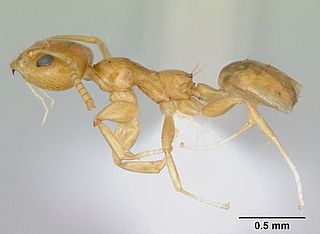
Axinidris is a genus of arboreal ants in the subfamily Dolichoderinae. The genus is known from forested areas the Afrotropics, where they nest in hollow stems or rotten wood. They forage mainly in trees, but occasionally on the ground.
Stenelmis lignicola is a species of riffle beetle in the family Elmidae. It is found in North America.
Tephromela lignicola is a species of lignicolous (wood-dwelling), crustose lichen in the family Tephromelataceae. It is found in the Falkland Islands, where it grows on fenceposts and similar timber.

Pholiota lignicola is a species of mushroom-forming fungus belonging to the family Strophariaceae.

Savoryella lignicola is a species of marine and freshwater based fungi in the Savoryellaceae family of the order Savoryellales. They are saprobic on submerged wood.











